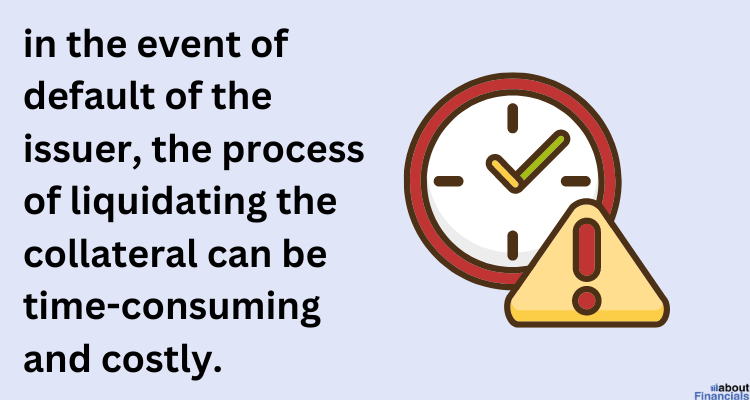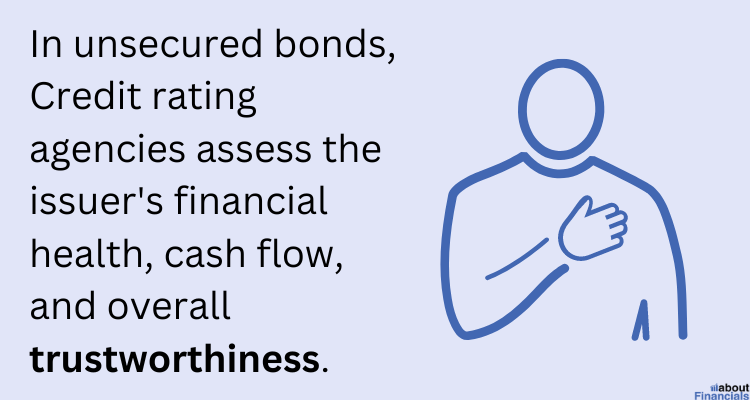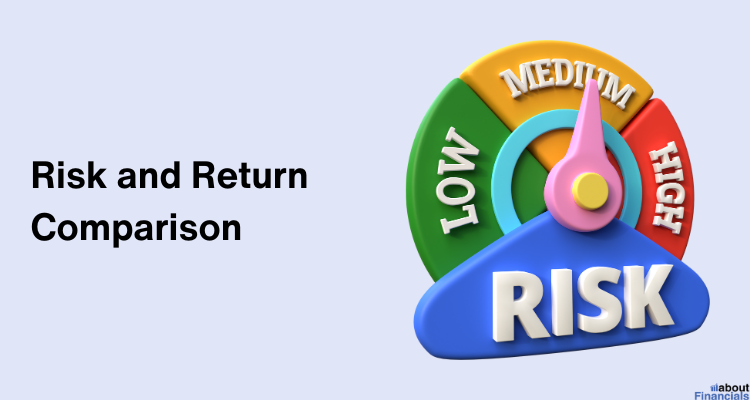Secured bond vs. unsecured bond are two distinct types of bonds that differ in terms of their risk profiles and the underlying collateral that backs them.
Secured bonds are backed by specific assets or collateral, such as real estate, equipment, or inventory. In the event of default, the bondholders have a claim on the collateral, which serves as a form of security. This collateral provides a higher level of protection for investors, as it can be liquidated to repay bondholders in case of default. Secured bonds generally offer lower interest rates compared to unsecured bonds, as the presence of collateral reduces the risk for investors.
Unsecured bonds, also known as debentures or corporate bonds, do not have specific collateral backing them. Instead, they rely on the general creditworthiness and reputation of the issuer. Unsecured bondholders have a claim on the issuer’s assets as a whole, but they are not directly tied to specific collateral. Consequently, unsecured bonds carry a higher level of risk compared to secured bonds, and they typically offer higher interest rates to compensate for this risk.
1. Secured bonds
Collateral – the key component of secured bonds

Collateral serves as a safeguard for bondholders in case the issuer defaults on the bond payments. It is an asset or a pool of assets that the issuer pledges to secure the bond. This collateral can be anything of value, such as real estate, equipment, inventory, or other tangible assets. By having collateral, investors have a direct claim on those assets, providing them with an added layer of protection.
Examples of common collateral used in secured bonds
Secured bonds can have a wide range of collateral depending on the nature of the issuer and the industry it operates in.
For example, a real estate company might offer secured bonds backed by specific properties or land holdings.

Similarly, a manufacturing company may use its machinery and inventory as collateral. Other common types of collateral include cash reserves, accounts receivable, and intellectual property.
Advantages and benefits of investing in secured bonds
Investing in secured bonds offers several advantages for bondholders.
Firstly, the presence of collateral reduces the risk of loss in the event of default. If the issuer fails to make interest or principal payments, bondholders can claim the collateral to recover their investment. This security feature provides a sense of comfort to investors, particularly those seeking more stability in their investments.
Secondly, secured bonds often come with lower interest rates compared to unsecured bonds. Since the collateral mitigates the risk, issuers can offer lower borrowing costs, which translates into better yields for investors.
This makes secured bonds an attractive option for conservative investors looking for steady income streams.
Disadvantages and risks associated with secured bonds
While secured bonds provide additional protection, it’s important to understand the risks and considerations involved.
One key aspect is the valuation of collateral. The value of assets can fluctuate over time, which means that even with collateral, there is still some degree of risk. Investors need to assess the quality and liquidity of the collateral to gauge its effectiveness in safeguarding their investment.
Additionally, secured bonds are not immune to the risks associated with the issuer. Factors such as the financial health of the company, industry trends, and economic conditions can impact the issuer’s ability to fulfill its obligations.
Therefore, conducting thorough research on the issuer’s creditworthiness and evaluating their financial statements becomes crucial before investing in secured bonds.

Furthermore, in the event of default, the process of liquidating the collateral can be time-consuming and costly.
Bondholders may experience delays in receiving their repayment or may face challenges in selling the collateral at a fair value. These factors emphasize the importance of carefully assessing the risks and conducting due diligence before investing in secured bonds.
2. Unsecured Bonds
Features and characteristics of unsecured bonds
As mentioned earlier that unsecured bonds don’t come with any collateral backing them up. Instead, they rely on the trust and good name of the issuer to convince investors that they’ll make good on their debt obligations.
There’s no house or car to swoop in and save the day if the issuer goes bankrupt on payments.
However, unsecured bonds are still tradable, which means you can buy or sell them on secondary markets if you want to shake up your investment portfolio.
Credit risk and credit ratings for unsecured bonds
Let’s talk about the risk factor. Since unsecured bonds lack the security blanket of collateral, you need to pay attention to the issuer’s creditworthiness.

Credit rating agencies assess the issuer’s financial health, cash flow, and overall trustworthiness. Their ratings act as a guide, showing you the level of risk associated with these unsecured bonds.
Advantages and disadvantages of investing in unsecured bonds
Let’s weigh the pros and cons of unsecured bonds.
Unsecured bonds offer higher yields compared to their secured counterparts. That’s because the issuers want to sweeten the deal and compensate you for taking on the extra risk. So, if you’re a bit of a risk-taker and like the potential for juicy returns, unsecured bonds might tickle your investing instinct.
On the flip side, investing in unsecured bonds comes with its fair share of risks too.
Remember, there’s no specific collateral backing these bonds, so if the issuer defaults, it can be a bumpy ride to recover your investment.
Plus, if the issuer files for bankruptcy, you’ll find yourself lining up behind secured bondholders and other creditors in the queue for repayment.
It’s like being in the backseat of a rollercoaster—it can get a little wild.
Analyzing the role of creditworthiness in unsecured bonds
Creditworthiness is like the secret sauce that determines the trustworthiness of the issuer.
To assess it, you’ll need to dig deep into their financial stability, profitability, and how they manage their debts. Credit ratings, are like your trusty sidekick—they give you insights into the issuer’s reputation and the likelihood of them meeting their debt obligations.
To play it smart with unsecured bonds, diversify your investments across different industries and issuers.
By doing your homework, keeping an eye on credit ratings, and staying updated on the financial health of the issuers, you’ll navigate the unsecured bond landscape like a true adventurer.
3. Secured Bond vs. Unsecured Bond [Risk and Return Comparison]

| Secured Bonds | Unsecured Bonds |
| Lower risk due to specific collateral backing | Higher risk as they rely on issuer’s creditworthiness |
| Collateral provides security for bondholders | No specific collateral backing the bond |
| Examples of collateral: real estate, equipment, inventory | Relies on the creditworthiness and reputation of the issuer |
| Lower yields compared to unsecured bonds | Higher yields to compensate for the increased risk |
| Preferred by conservative investors seeking stability | Attractive to risk-tolerant investors seeking higher returns |
4. How to decide while investing – Secured Bond vs. Unsecured Bond?
Role of market conditions

Market conditions play a crucial role in shaping the choice of bond type.
When the tides of the market are uncertain, investors often seek the stability and security provided by secured bonds. The presence of collateral acts as a comforting safety net during turbulent times.
However, when optimism and confidence fill the air, unsecured bonds may take the spotlight. Investors, hungry for higher yields, may be enticed by the allure of unsecured bonds, willing to take on a bit more risk in exchange for potentially juicier returns.
Impact of credit ratings on bond pricing and investor demand
Credit ratings, the gatekeepers of trust in the bond world!
These assessments of an issuer’s creditworthiness have a significant impact on bond pricing and investor demand.
When a bond receives a favorable credit rating, it shines like a star, attracting investors and allowing issuers to offer bonds at more attractive prices.
On the other hand, a lower credit rating casts a shadow of doubt, leading to higher borrowing costs for issuers and potentially dampening investor demand.
Legal considerations
In the world of bonds, legality reigns supreme.
Issuers and investors of both secured and unsecured bonds must navigate a landscape filled with legal considerations.
Specific legal documentation, such as bond indentures and security agreements, are often crafted to protect the rights and interests of bondholders. Investors, too, must familiarize themselves with legal aspects, such as the terms and conditions outlined in the bond contract and the rights they hold as bondholders. Understanding the legal framework is essential for both issuers and investors to maintain transparency and mitigate potential risks.
Regulatory aspects and their influence on bond markets
Regulatory aspects play a vital role in shaping the bond markets.
Various regulatory bodies, such as securities commissions or financial regulatory authorities, set guidelines and rules that govern the issuance, trading, and disclosure of bonds.
These regulations aim to protect investors, promote market integrity, and ensure fair practices. They cover aspects like disclosure requirements, reporting standards, and even restrictions on certain types of bonds.
5. Investor strategies and considerations
Portfolio diversification and the role of bonds

When it comes to investor strategies, portfolio diversification takes center stage. Bonds, play a crucial role in diversifying investment portfolios.
They offer a counterbalance to other asset classes, such as stocks or real estate, helping to spread risk and reduce volatility. Bonds have historically exhibited lower volatility compared to stocks, making them an attractive addition to a well-rounded portfolio.
Investor risk appetite
Each investor has their own unique risk tolerance, and this plays a significant role in bond selection. Conservative investors, seeking stability and capital preservation, often lean towards secured bonds.
The presence of collateral provides an additional layer of security. On the other hand, risk-tolerant investors, hungry for higher returns, may venture into the realm of unsecured bonds.
Long-term and short-term investment horizons
Time is a crucial factor for bond investors. Investment horizons, whether long-term or short-term, influence the bond selection process.
Long-term investors, with a patient outlook, may opt for bonds with longer maturities. These bonds offer the potential for higher yields and the opportunity to capture interest income over an extended period.
On the other hand, short-term investors, seeking liquidity and flexibility, may favor bonds with shorter maturities.
Tips for selecting the appropriate bond type
Choosing the right bond type is akin to finding the perfect fit for your investment goals. Here are a few tips to guide you along the way:
- Clarify your investment goals: Determine what you aim to achieve with your bond investment. Are you seeking stable income, capital preservation, or growth?
- Assess risk tolerance: Understand your comfort level with risk. Consider whether you prefer the security of collateral-backed bonds or are willing to explore unsecured bonds for potentially higher returns.
- Evaluate time horizon: Determine your investment time frame. If you have a longer horizon, consider bonds with longer maturities for potential yield advantages. For shorter time frames, focus on bonds with shorter maturities for increased liquidity.
- Research credit ratings: Examine the credit ratings of potential bond issuers. Higher-rated bonds typically indicate lower default risk and may align with conservative investment goals.
- Seek professional advice: If you’re unsure or new to the world of bonds, don’t hesitate to consult with a financial advisor. Their expertise can help you navigate the complexities and select bonds that align with your goals and risk tolerance.
Final thoughts
By aligning investment goals, risk tolerance, and time horizons, investors can select the appropriate bond type that suits their needs. Seeking professional advice and conducting thorough research on credit ratings are valuable steps in making informed decisions.
Ultimately, the bond market provides opportunities for investors to balance risk and return, achieve their financial goals, and navigate the ever-changing dynamics of the market. With careful consideration, knowledge, and a touch of strategic finesse, investors can harness the power of bonds to enhance their investment portfolios and embark on a successful investment journey.
